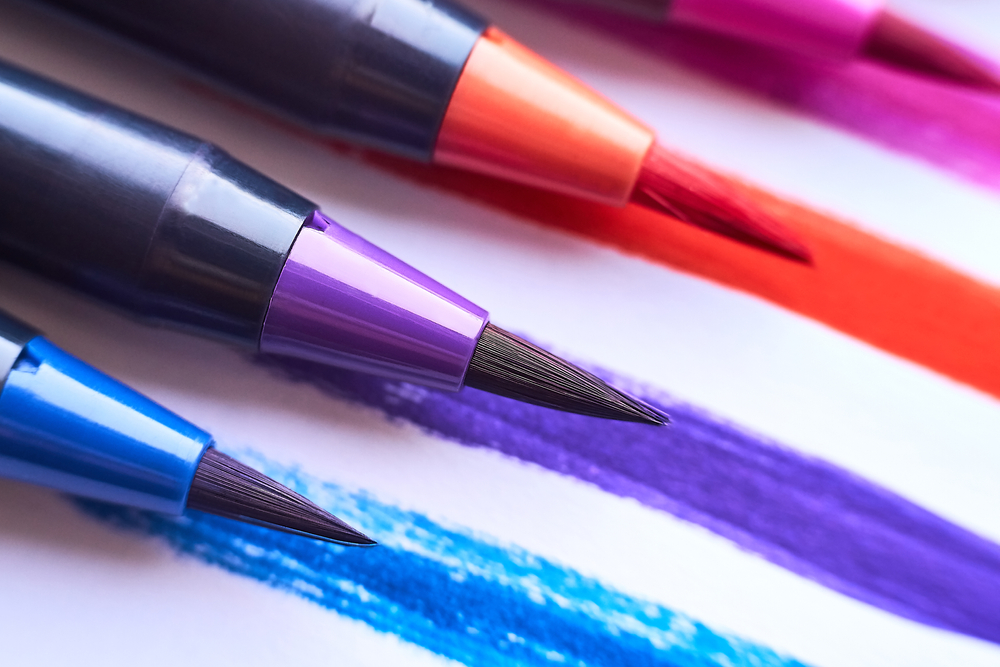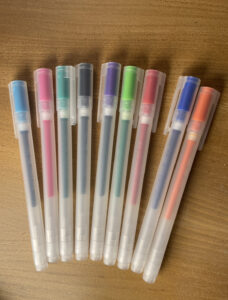Are you saving purple?

Saving purple. It’s when you save your best things because they’re too special to use. It’s a concept invented by my friend Helen Fisher, a business psychologist. Here, she explains how the idea originated and discusses the upsides and downsides of ‘saving purple’ in your life.
“I first remember thinking about saving purple when I was about five,” says Helen. “I’d been given one of those packs of felt tip pens that would arrive in rainbow order. And I called one of those colours ‘saving purple’.”
Crucially, ‘saving purple’ wasn’t any old purple. It wasn’t lilac or burgundy, it was a rich, royal purple.
“It’s a crown jewels kind of purple,” says Helen. “Very bold, vibrant and majestic. It was just obviously the best colour in the pack.”
Too special to use?
“Yes, it needs to be saved.”
And what was she saving it for?
“There wasn’t a precise idea of what I was saving it for. Saving purple can be used. Just not now. Partly because you’re saving it for the time when you need it; partly because you’ve already saved it for quite a while. But in practice, there was never any justification for using it right now.”
The sad result: a dry squeak
Unfortunately, the inevitable result of leaving saving purple untouched in the pack was that it would eventually dry out. If and when Helen finally decided to use saving purple, the chances were that the princely pen would only produce a dry squeak. No purple at all.
For Helen, though, all was not lost. “By that point, I probably had another saving purple as someone would have given me a new set of felt tip pens.”
Saving the best for later, and possibly forever
Essentially, saving purple means saving your best things for later, whether it’s a purple felt tip, a treasured notebook, your favourite clothes or most prized jewellery.
Helen says: “The saving purple rule comes into play with some of the beautiful crystal glasses we were given as wedding presents. Most of the time, they sit in the cupboard because they’re too special to use. I’ve had to make a conscious decision to use them more, and I’m trying to tell myself it doesn’t matter if they get a bit chipped.”
Clothes are another example. “I’ve got a really lovely blue silk dress that I wore on my 50th birthday party. It’s a great party dress, but I think I must only wear it for a special occasion. And I do slightly think I ought to just wear it the whole time, maybe even to walk the dog.”

It’s obvious that saving purple is the best colour
The repercussions of saving purple
Helen believes that saving purple is a lifelong trait. “I think it does have repercussions, though,” she admits. The benefit is that you always have some saving purple. If you never use it, then you’ve always got it. The downside is that you don’t use your best thing.”
Another downside of saving purple is that you can save things for so long that you fall out of love with them. Helen says: “I had a handbag that I loved so much. It was a present and it was amazing. I rarely used it just because it was so lovely. And now it looks a bit old-fashioned.
“Actually, maybe we should be spending the purple every day, not saving it. Imagine if you did?”
The marshmallow test
Helen suggests that the world may divide into two types: those who save purple and those who spend it. She quotes the famous marshmallow test developed by psychologist Walter Mischel, a professor at Stanford University, in the 1970s. “In the test, the researchers placed a marshmallow in front of nursery school children and told them they could either eat the marshmallow immediately or have two marshmallows if they left the first uneaten for 15 minutes.
“They followed up the marshmallow kids decades later and found that those who delayed gratification tended to have better self-control and to do better in life.”
Do you spend or save purple?
How about you? What’s your inclination towards saving or spending purple? Answer yes or no to the following questions.
- As a child, did you ever keep a special toy in its box, unopened and unplayed with?
- Have you ever held onto a favourite perfume or aftershave for years, only to find it’s gone off when you open it?
- Imagine your own version of the marshmallow experiment. One of your favourite foods is in front of you. If you leave it untouched for 15 minutes, you’ll get twice as much of the treat. Do you wait for 15 minutes?
- Is there a piece of clothing in your wardrobe that’s so special that you’ve never worn it?
- Do you have a treasured watch or piece of jewellery that you never wear?
If you answered yes to three or more, you’re a purple saver. If you answered no to three or more, you’re more of a spender than a saver.
Saving purple and the next generation
Helen has three children, none of whom have taken on the saving purple mantle. Helen’s siblings rejected the idea, too. Helen’s 19 year old niece, Scarlet, recalls how her mother, Rachel, would talk about saving purple as a cautionary tale.
She says: “When I was little, my mum used ‘saving purple’ as a warning about not keeping and saving things until their meaning and usefulness was invalidated. She believed in enjoying her nice clothes and jewellery on everyday occasions to make those times feel special, rather than preserving them for a big event or waiting for a perfect moment.
“As a child, I was warned that if I collected things and didn’t use them, eventually they wouldn’t work or would be useless and I’d never have the satisfaction of actually enjoying them. So rather than saving our favourite things, like the purple pens, we should use them for our daily doodles before they dry up!”
Leaning towards the idea
Scarlet admits, though, that she does have saving purple tendencies, despite her mother’s warnings. “When I was young, I used to save things like stickers and face masks, and there were times when I didn’t wear new clothes until I was just about to grow out of them, then got very upset when they no longer fit me.
“So I do understand the whole idea of saving purple. But the story encourages me now to do the opposite of saving my purple and instead to enjoy it and use it to make everyday moments in life just that little bit brighter and happier.”

A purple pen brightens up any crossword
A radical move: spending purple
Even Helen is now re-evaluating a lifetime of saving purple and considering whether to rethink her stance. “I do wonder whether saving purple should be adjusted for different life stages,” she says. “As you get older, what are you saving all that purple for?”
As a reminder, Helen is now using a purple pen to do the crossword every day.
More
- Contact Helen at Nicholson McBride Fisher.
- Read about my work writing for charities.
- Discover my work writing for music clients.